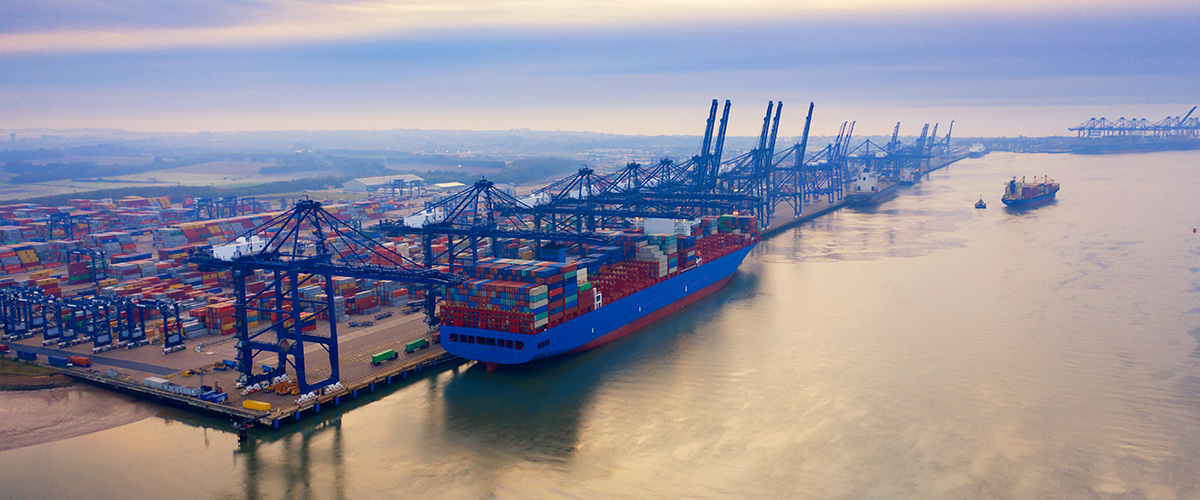The U.S. transportation and logistics networks are under pressure in 2025, as global tensions, economic shifts, and rising consumer expectations reshape how goods flow across the country.
Initially forecasted to grow from 1.6% in 2024 to 2.7% in 2025, the industry’s growth projection has been revised down to 2.1% in 2025 by Oxford Economics. This adjustment reflects the impact of escalating trade disputes, particularly tariff increases on U.S. imports and retaliatory measures from key trading partners. These developments are reducing freight volumes and slowing momentum across maritime, land, and air transport. Atradius Underwriter, Tosin Faola, gives the latest insights into the transportation and logistics sector.
Consumer Demand Remains Strong
Despite ongoing economic and geopolitical pressures, U.S. consumer spending remains a key driver of transportation demand. Private consumption is projected to grow by 2.9% annually in both 2025 and 2026, supported by modest interest rate cuts and rising wages. This steady demand is fueling the movement of both durable and non-durable goods across the country.
As a result, freight activity in land and maritime transport began to recover in the second half of 2024. Increased retail restocking and higher container volumes reflect this rebound, signaling that strong consumer behavior continues to play a stabilizing role in the industry’s performance.
Sector Strengths and Weaknesses
Strengths:
- Resilient consumer demand continues to drive steady freight volumes across all major transport modes.
- Land and maritime transport showed signs of recovery in late 2024.
- Air freight is benefiting from increased demand for faster e-commerce delivery.
Weaknesses:
Transportation
How Does Credit Insurance Support Transportation Businesses?
Discover how credit insurance can help transportation companies manage risks tied to delayed payments, fuel price volatility, staff shortages, equipment financing, and more.
Learn MoreGet in Touch
Looking For a FREE Quote?
Obtaining a free Trade Credit Insurance quote or just some more information is fast and easy! Get in touch with us today.
Get Started Call 800-822-3223- Labor shortages in the trucking segment are contributing to delays and rising costs.
- Tariff-related disruptions are heavily impacting maritime shipping, especially on trans-Pacific routes from Asia to the U.S.
- The Red Sea is extending ocean transit times and creating container shortages, straining global shipping capacity.
Green Transition
The push for greener transportation is reshaping the industry. Companies must invest in cleaner technologies and infrastructure to stay competitive. While this shift creates opportunities for innovation, it also presents risks for businesses that fail to adapt. Environmental regulations and carbon taxes could raise operational costs. If passed on to consumers, these costs may reduce demand for transportation services.
To meet sustainability goals, transportation providers will need to rethink fleet strategies, adopt alternative fuels, and implement smarter logistics systems. Balancing environmental responsibility with affordability and efficiency will be essential for long-term success.
Key Risk Factors to Watch
Trade tensions are reducing freight volumes and complicating supply chain planning. Weaker trade activity among NAFTA partners, particularly between the U.S., Canada, and Mexico – is expected to impact land freight. Trucking, which plays a vital role in cross-border trade under the USMCA framework, remains especially vulnerable.
Maritime shipping continues to face challenges due to disruptions in the Red Sea. These issues are increasing transit times and causing container shortages, which strain global shipping schedules and capacity. Air freight, while less directly affected, is experiencing a surge in demand as companies seek faster delivery options. Limited cargo capacity and rising demand are driving up shipping rates and adding pressure to logistics operations.
Navigating the Road Ahead
The U.S. transportation and logistics industry in 2025 is navigating a complex environment. While consumer demand remains a strong foundation for growth, the sector faces significant challenges from trade distribution, labor shortages, and geopolitical instability. To remain competitive, industry leaders will need to prioritize strategic planning, operational flexibility, and continued investment in resilience will be essential for navigating the year ahead.


